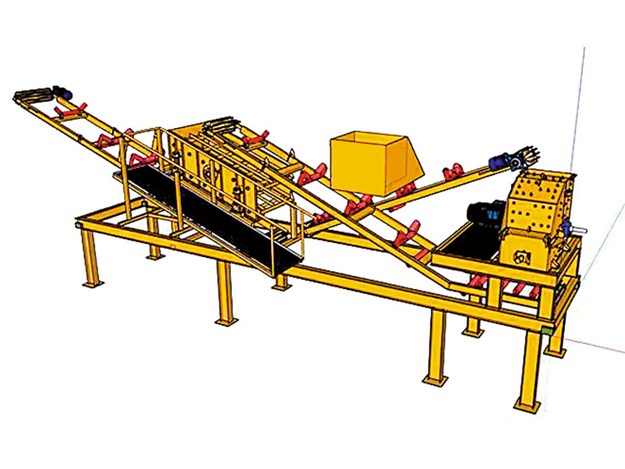Product feature: Sanland's Kumbee range
Originally an Australian machine, Kiwis have adapted the Kumbee hammermill to local conditions. Here's a quick look at the range available in NZ.
 |
|
Kumbee crusher in Vanuatu
|
The Kumbee is a hammermill that has been around for about 40 years. Originally an Australian machine, New Zealanders adapted it to local conditions. There have been a lot of variations over the years in hammers and side plates, and heavy equipment manufacturer and distributor Sanland has changed procedures to work the differing types of hammermill machinery.
Reducing rock sizes
 |
|
Kumbee 1.5 ready for installation
|
The Kumbee hammermill can be ideal for reducing rock 80 to 100mm into the smaller end of the aggregate size range while giving a cubicle shape that can be compacted together well.
Hammermills can excel at making GAP20 and seven-millimetre crusher dust. Generally, a larger mobile fixed hammer impactor will start to struggle and give high wear-down at about 20mm, Sanland says. It’s in this size range where a hammermill plant in closed circuit with a screen can come into its own.
Advantage over impactor crusher
 |
|
Kumbee screen combo built on 40ft container platform
|
Kumbee hammermills used to be made in a series of sizes (Kumbee 2s and 3s), and Sanland has some customers still using those models, but say they stick to making the Kumbee 1 and Kumbee 1.5s, as they feel there’s a greater advantage for owners with those machines.
According to Sanland, a Kumbee 1 or 1.5 will provide a low-cost crushing solution. Part of this has to do with the way a hammer is designed, giving four turns from a hammer, which is double the turns of a normal fixed hammer impactor.
The Kumbee hammers are made from the same metal used on fixed hammer mobile impactors, and Sanland also supplies ceramic insert hammers for extra life.
Reduced power usage
.jpg)
A Kumbee 1 only requires 30kW of power to take 50tph through the rotor, Sanland says, and the larger Kumbee 1.5 will use around 75kW to take about 75tph through the rotor.
While this might not sound like much to the uninitiated, a Kumbee hammermill is designed to work in a closed circuit with a screen continuously taking out the fines proportion of the feed. So, a Kumbee 1.5 working this way can easily be a 100 to 150tph plant, Sanland says.
Alternative to VSI crusher
.jpg) |
|
Computer Aided Design of Kumbee 1.5
|
In most markets, a PAP or five millimetre down product is becoming hard to source. A VSI (vertical shaft impact) crusher is often seen as a normal solution to make this type of product. Alternatively, a Kumbee hammermill can take larger infeed, has lower wear parts cost per tonne, and uses less fuel than a VSI, Sanland says.
Kumbee for quarry and concrete makers
Sanland feels the Kumbee has a big part to play in quarries and concrete makers in the future, so has developed a closed-circuit Kumbee/screen combination aimed at producing GAP40/20 and down.
Sanland has based the combination on a 40-foot container frame, so transport is cheap and easily available anywhere in New Zealand. Additionally, the legs are bolted on to give height for extra stockpiling. The machine is in production now, and Sanland says they are looking for businesses that have a GAP40, GAP20, or dust demand to trial it for them.
For more information, visit sanlandequipment.co.nz.
Find new and used heavy machinery for sale in NZ
Keep up to date in the industry by signing up to Deals on Wheels' free newsletter or liking us on Facebook.





.jpg)

.jpg)
.gif)
.gif)
.gif)
.gif)


